
Who is ALICE?
The ALICE population are the individuals and families in our community who are Asset Limited, Income Constrained, and Employed. They struggle with financial hardship despite often working more than one job. More specifically, this population earns just above the Federal Poverty Level but less than what it costs to make ends meet. Over 31% of West Tennesseans are ALICE, while roughly 20% live below the poverty threshold.
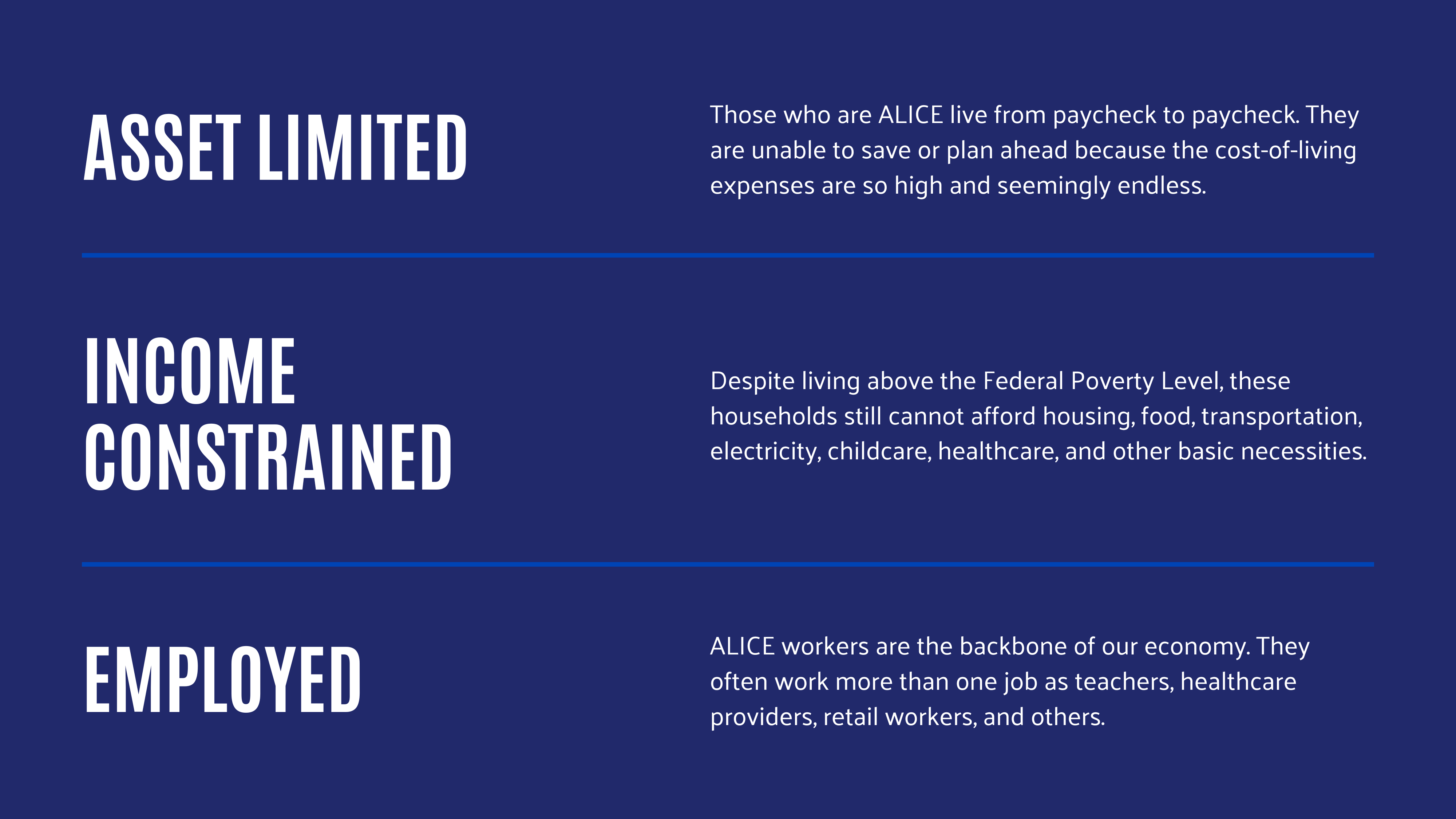
ALICE is an acronym to describe households who are the “working poor.” They are those working every single day but struggle to provide for their families. They are consistently living on the edge and often a flat tire away from financial trouble.
The graph below shows the trend in hardship over the past decade plus. The number of ALICE households and those living in poverty is higher today than it was in 2010. In 2023, the Median Household Income across our 15-county service area in West Tennessee was $50,695, which is $17,000 less than the state median. The total percentage of households categorized as either ALICE or living in poverty was 51%, which is roughly every other person you meet.
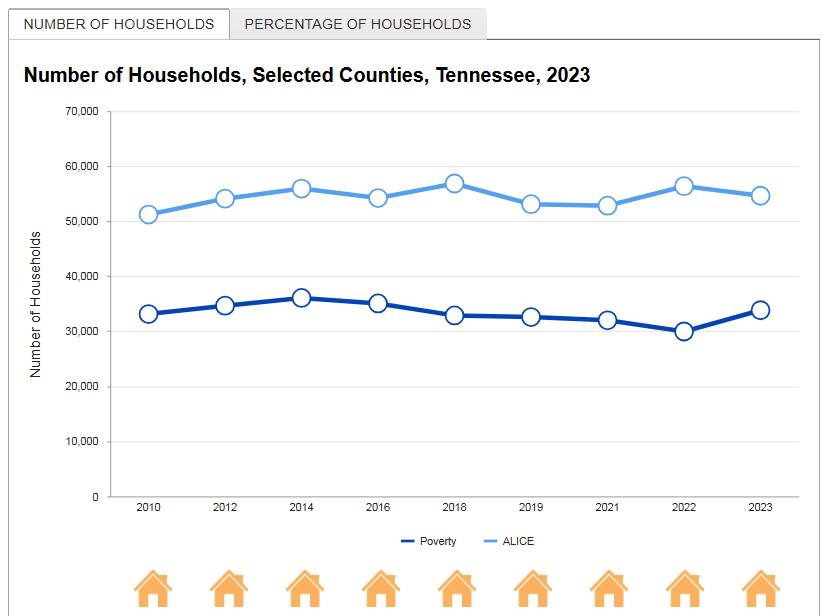
Over 50% of households in West Tennessee are either ALICE (32%) or living in poverty (19%). Significant disparities exist when broken down by category of race or gender of the head of household. This information matters because a huge but hidden population is financially struggling. These numbers represent over 90,000 households or roughly 231,000 people here in West Tennessee.
The success of our community is directly related to the financial well-being and stability of its members. We rely on ALICE workers every day — from the child care educator to the grocery store clerk to the delivery person to the home health aide. But what happens when cash-strapped ALICE households are forced to make impossible choices such as deciding between a car repair or quality child care, heat or a prescription? These short-term decisions have long-term consequences not only for ALICE, but for all of us.
Yet, as demonstrated in the chart below, most families don't make enough to survive, let alone operate a stable budget. A family of four, with two small children in child care, would need to bring home over $70,000 a year to survive. But to operate a stable budget, that same family would need to bring home over $100,000 a year.
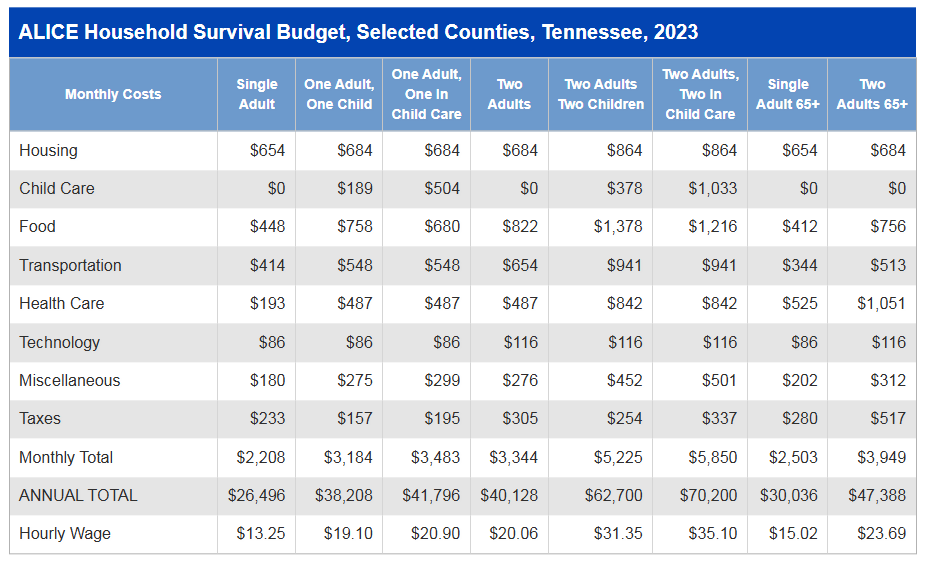
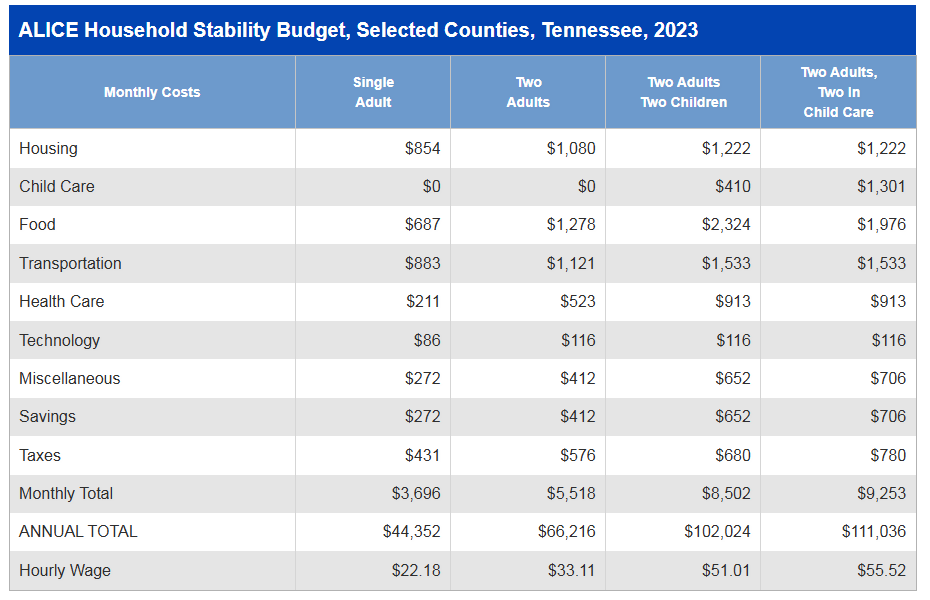
Below are the Top Occupations in Tennessee. While there has been an increase in wages over the past 5 years, it has not kept up with inflation. These numbers demonstrate that many employees work jobs that make it difficult to maintain a stable budget.
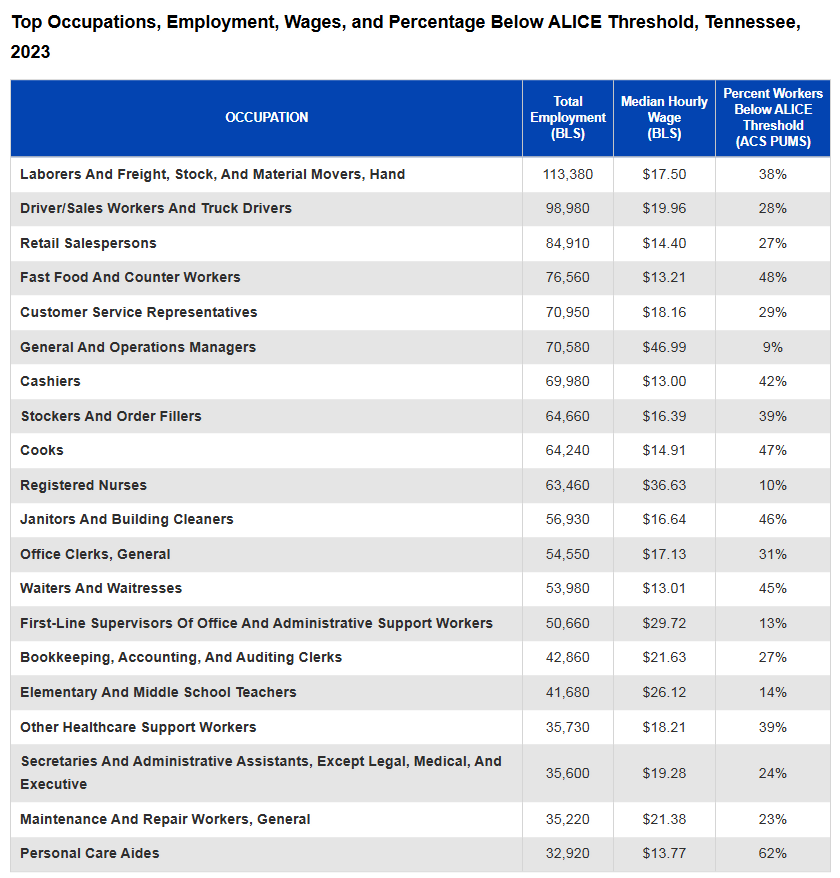
One issue is the level of educational attainment across our region. There is a prominent financial contrast in households with higher levels of education achievement compared to those with only a high school education or less. According to The Sycamore Institute, only 15.95% of residents in West Tennessee have attained a bachelor’s degree.
Individuals with a bachelor’s degree earn approximately $21,000 more across our state than those who with just a high school diploma. There is also a $14,000 median difference between those with a bachelor’s degree and those who have a graduate degree or higher.
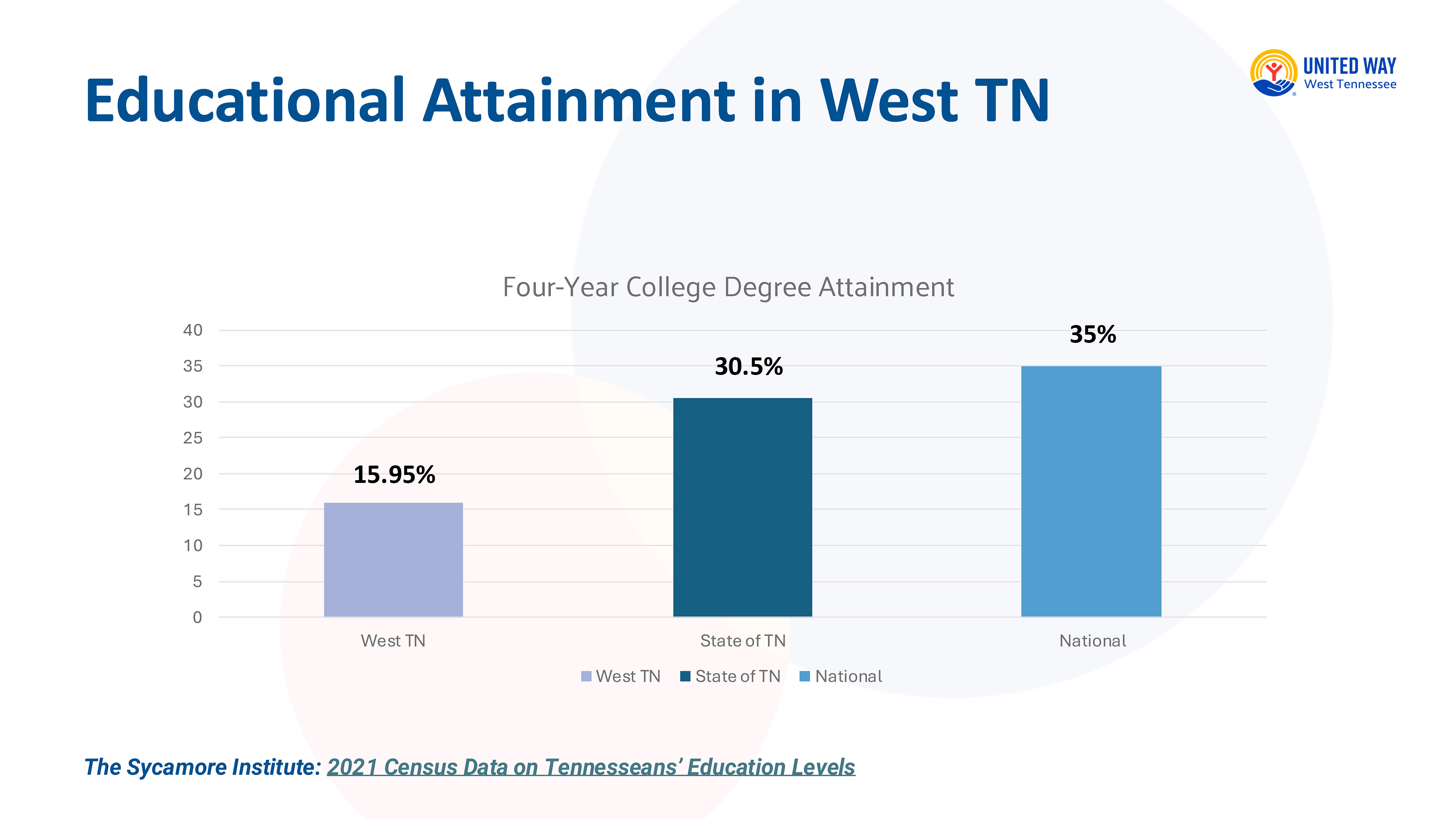
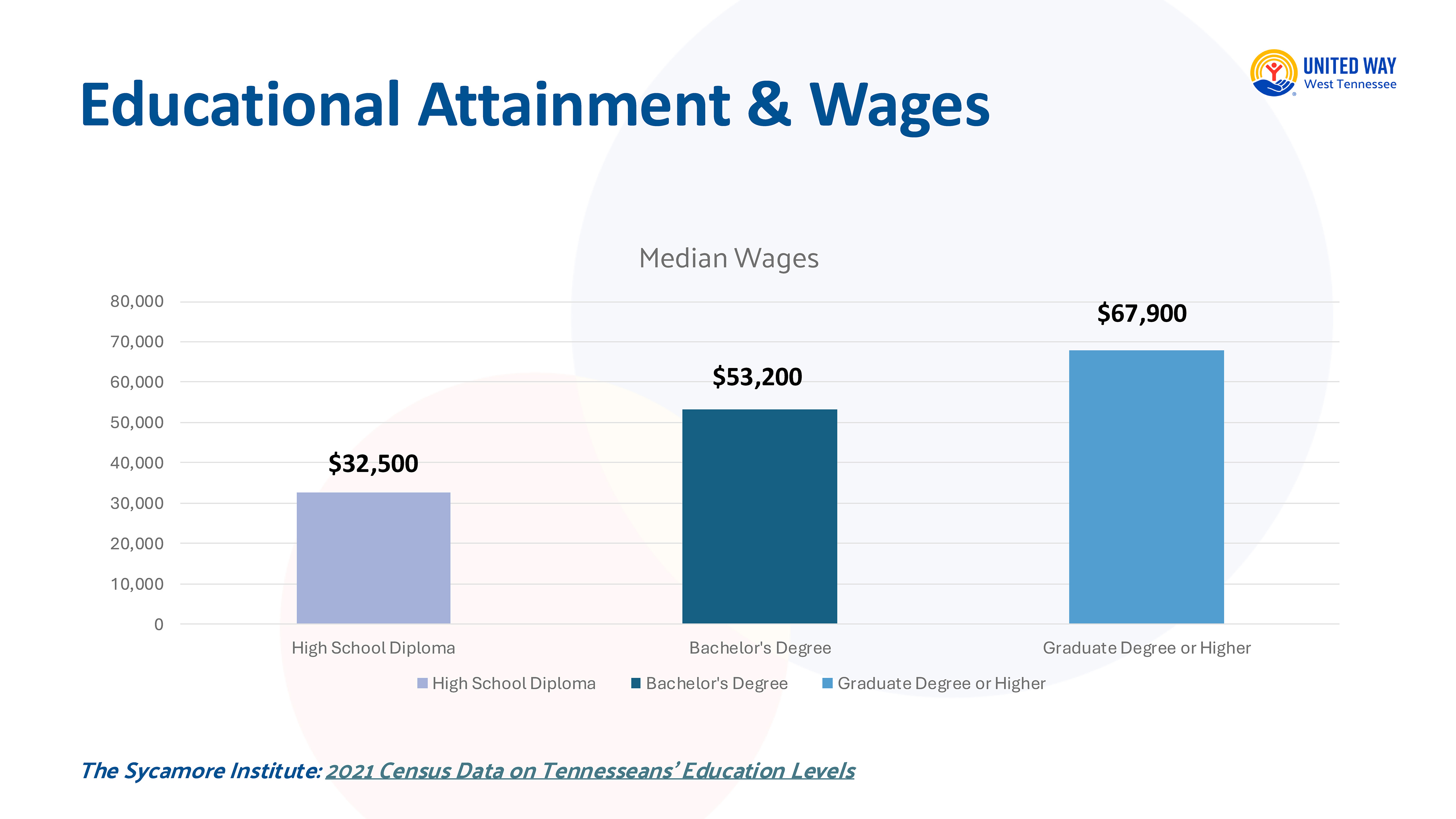
United for ALICE
THE UNITED WAY ALICE REPORT REVEALS THE MAGNITUDE OF FINANCIAL HARDSHIP IN WEST TENNESSEE.
ALICE by the Numbers
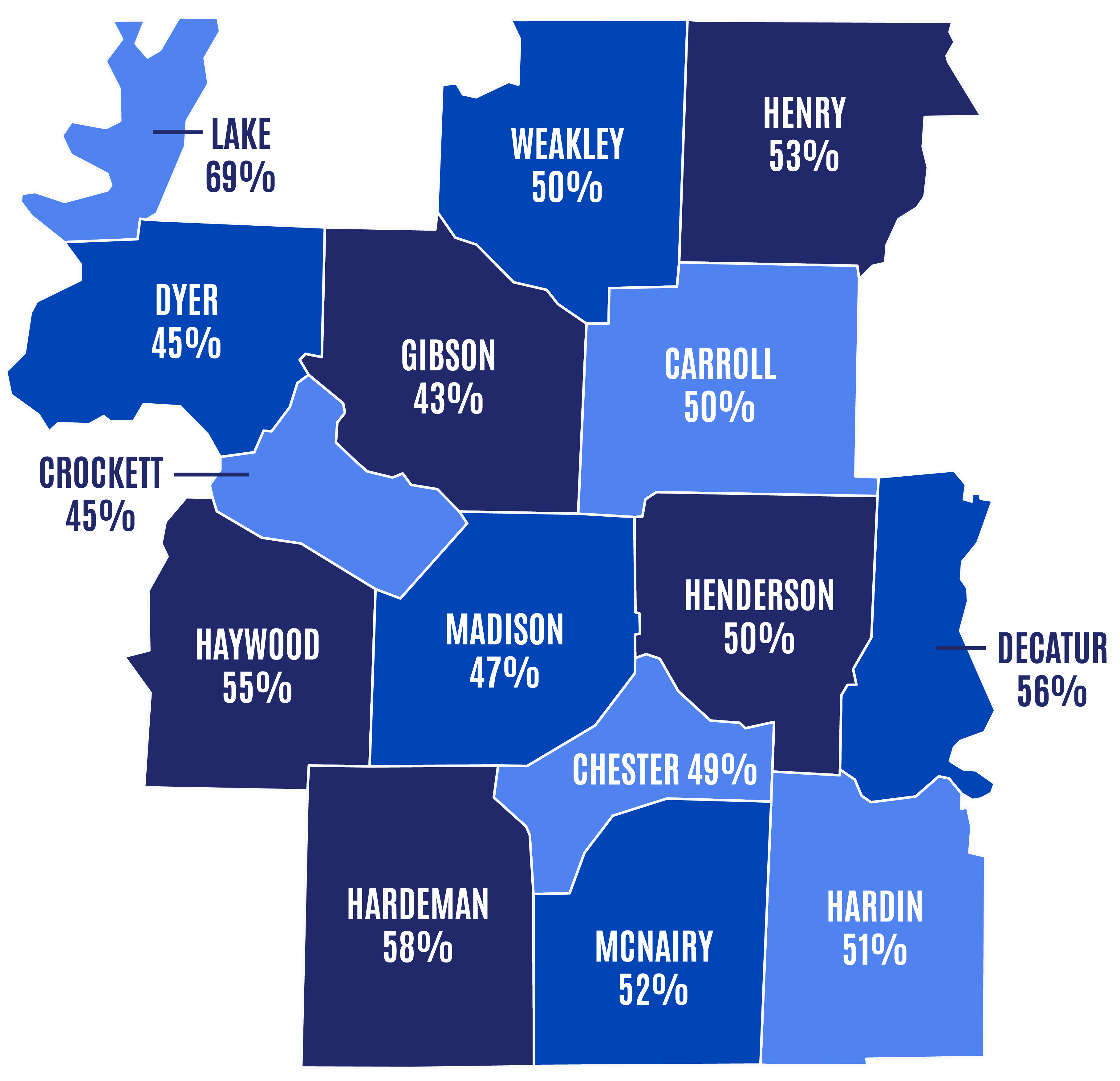
United For ALICE recently released their newest report for Tennessee that sheds light on this group's financial struggles. There are vast differences according to location. Click below to access county-specific reports relevant to the West Tennessee area.
Help Us Help ALICE
Equipped with this ALICE data, we can do even better to develop effective policies and track our progress toward reducing financial hardship in West Tennessee.
Inflation is hitting ALICE harder, with the cost of living for a family of four with an infant and a preschooler, excluding tax credits, rising to $102,024 in 2023. Compounding the issue was the loss of up to $15,000 in federal child tax credits and stimulus payments that this family could access in 2021.
Now, more than ever, we need action. Can we count on you?
